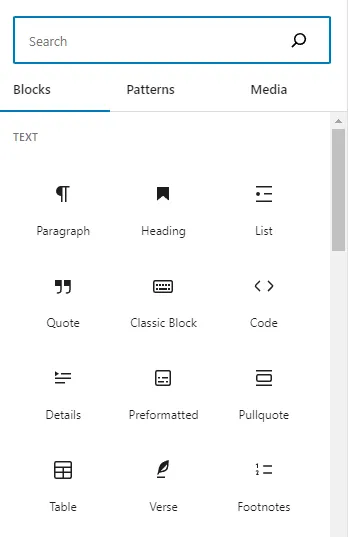Table of Contents
Introduction
Keeping up with the ever-changing digital world can be a challenge, especially when it comes to managing your website. If you’re using WordPress, you’re probably aware that Gutenberg has become the default editor as of version 5.0. Whether you’re an existing user or new to WordPress, it’s important to understand what it is. This comprehensive guide aims to demystify this editor, giving you the knowledge you need without pressuring you to make the switch.
What is Gutenberg?
Gutenberg is WordPress’s official block editor, introduced to replace the previous ‘TinyMCE’ editor now known as the classic editor. The block-based system provides a fresh, visual approach to content creation and editing. Each piece of content—be it text, images, or videos—is treated as a separate ‘block’ that you can easily manipulate to build your pages and posts.
On a side note and just as a point on interest the name pays homage to Johannes Gutenberg, the inventor of the movable-type printing press in the 15th century. The invention revolutionised the world of publishing by making books more accessible to the masses. You can thank me later for the useless info.
How Does Gutenberg Work?
Blocks: The Building Bricks
The central concept of Gutenberg is the use of blocks. Each element on your website, from a paragraph to a video, is a different block. These blocks are drag-and-drop, making it easy to add, rearrange, and style your content without needing a background in web development.
User Interface
The user interface is intuitive and clutter-free. When you log in, you’ll see a clean workspace where you can start adding your blocks. The editor provides real-time previews, allowing you to see how changes will appear before you even publish them.
Key Features

Block-Based Editing
With a focus on individual blocks, the new editor makes it incredibly easy to create rich layouts without having to delve into code.
Block-based editing is a transformative approach to website content creation, bringing in unparalleled flexibility and user-friendliness. Instead of dealing with a monolithic chunk of content, users work with individual “blocks” that can be anything – from text and images to videos and widgets. This modular approach allows users to intuitively arrange, customize, and style each block independently. It’s akin to building with digital lego pieces; each block fits seamlessly with the next, empowering even those without technical knowledge to craft beautiful, dynamic web pages with ease.
Pre-Designed Templates
If you’re not confident in your design abilities, Gutenberg offers a range of pre-designed templates. These templates serve as a great starting point, which you can then tailor to fit your needs.
Collaboration Made Easy
In a multi-user environment, Gutenberg’s block system allows for seamless collaboration. Different team members can work on separate blocks at the same time, thereby streamlining the content creation process.
Reusable Blocks
One of the standout features is the ability to create reusable blocks. If you find yourself using the same set of blocks across multiple pages or posts, you can save them as a ‘Reusable Block’ to quickly implement them in the future.
Why You Might Want to Know About Gutenberg
An Evolving Standard
As the default editor for WordPress, understanding Gutenberg is important. New updates and features are being continuously rolled out, so even if you’re not planning to switch, it’s good to know what’s on the horizon.
SEO-Friendly
Gutenberg’s clean and structured code can be beneficial for SEO. It makes it easier for search engines to crawl your site, potentially boosting your rankings.
Compatibility and Extensions
While Gutenberg is designed to work seamlessly with WordPress, it also supports a wide range of third-party blocks and extensions. This flexibility ensures that you can extend its capabilities as needed.
Future-Proofing Your Knowledge
Knowing how Gutenberg works keeps you ahead of the curve. As it continues to evolve and improve, being familiar with its features and capabilities will help you make informed decisions about your website management strategy.
Conclusion
Whether or not you’re interested in using Gutenberg, being informed is essential. As part of the broader WordPress ecosystem, it’s here to stay and will likely undergo many updates and enhancements in the coming years. Having a good grasp of what it is and how it works will arm you with the knowledge to manage your WordPress site effectively.
To find out more information on Gutenberg you can review the official page on the WordPress website here – https://wordpress.org/gutenberg/
If you want any more information or need a hand using it on your WordPress site just get in touch.



